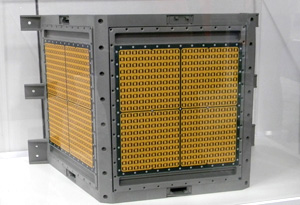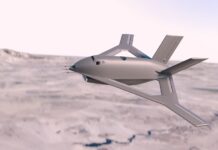

The US Navy has halted work on ‘Sense and Avoid’ radar for the RQ-4C Triton remotely piloted aircraft (RPA); “We have made a decision to pause of the development of that capability,” Capt Jim Hoke confirmed, Hoke is the Naval Air Systems Command program manager for the Triton. Hoke was speaking at a press conference at the AUVSI 2013 convention in Washington DC last week. “We are behind schedule (on that system)” Hoke acknowledged, “we made a decision to pause on the development of that capability for right now, it remains a requirement for the Navy, and to our program. We just need to take a hard look at the best path forward, based on where we are in technology perspective. We fully understand and appreciate how important that is especially when you get into areas as PACOM and Sixth Fleet” Hoke added. Commanders of those forces have said a sense and avoid system is critical for their operations.
Without a sense and avoid capability, Remotely Piloted Aircraft face an enormous obstacle. Civil aviation authorities will not allow them to fly in airspace frequented by civilian aircraft until systems are in place. Until that can be addressed, the market for drones will remain strictly limited to segregated military airspace. Hoke noted the Navy has been ‘knocking down barriers’ as it goes forward with Triton airspace integration effort. “We’ve got flight clearance, and we work with the FAA to get ourselves into airspace.” Hoke noted, “We’ve a lot work to do, we are putting the commitment to ensure we have the data to support those discussions.
According to Hoke, regarding the future of the Triton’s Sense and Avoid systems, all options are on the table and potentially the entire effort could recompleted from scratch. Potentially, radar contractor ITT Exelis could lose its place as the sense and avoid system supplier. “Right now I’m waiting for Northrop Grumman to come back to me and brief what are our potential options going forward,” Hoke says.
















